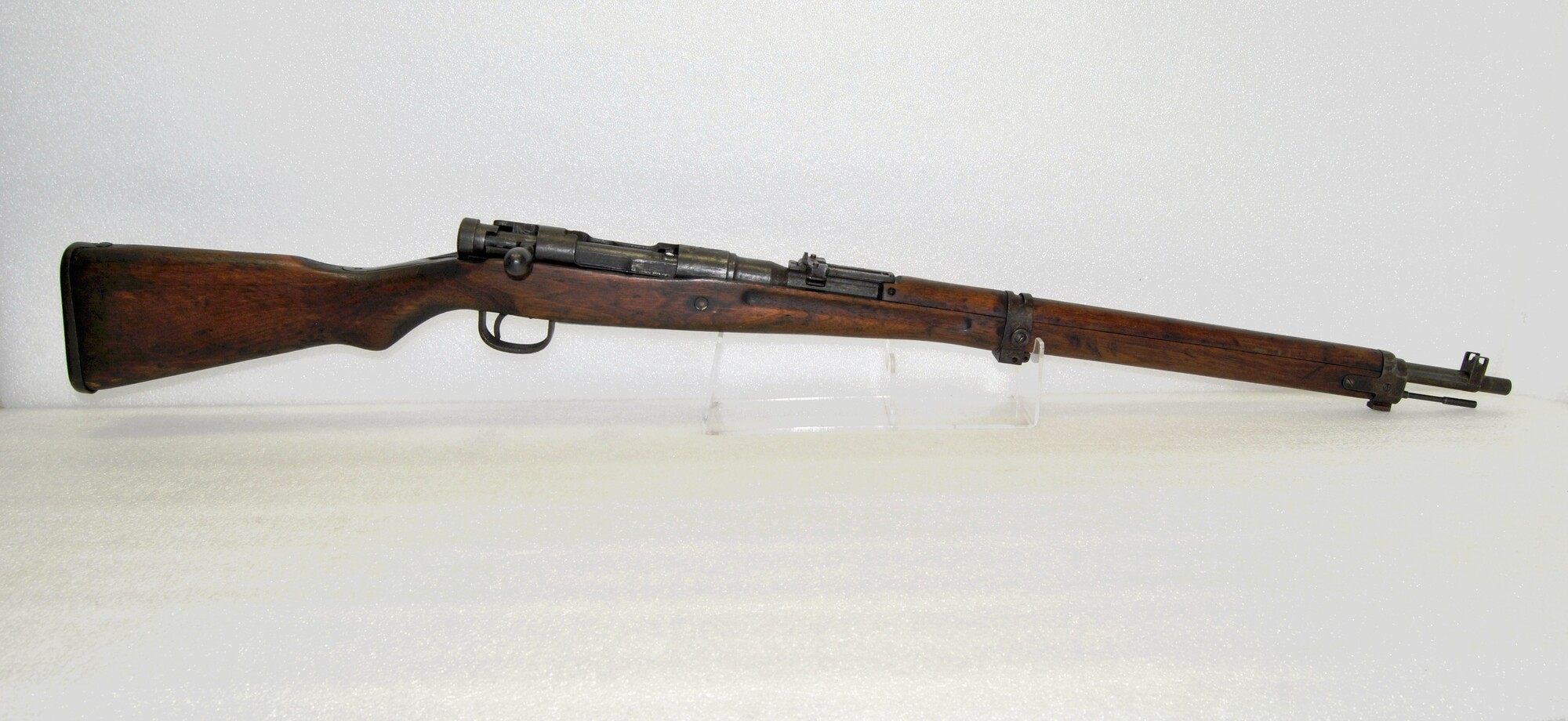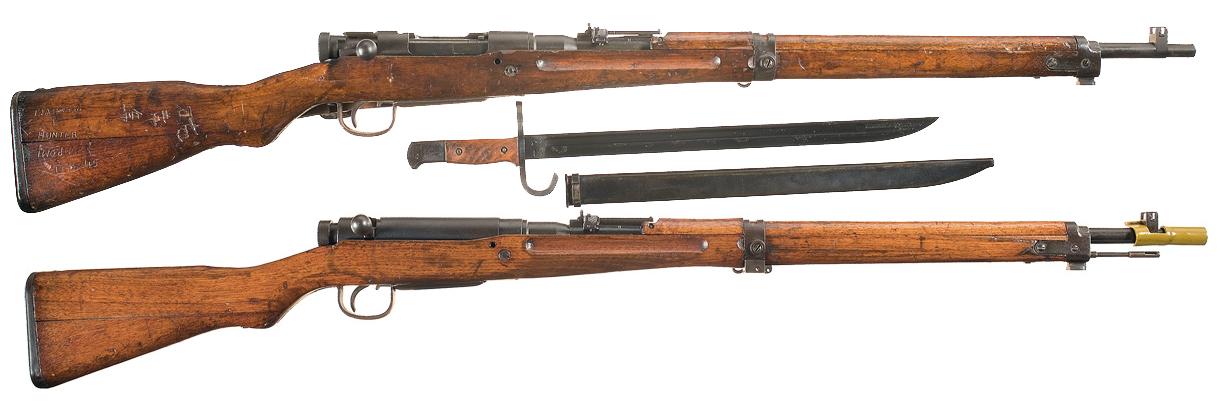

Some Type 38 rifles captured by the Kuomintang forces were also converted to fire the 7.92×57mm Mauser round. Some of the captured Sino Arisakas were later exported to the United States, examples including a number of Type 38 carbines rebarrelled and rechambered for the 7.62×39mm round. Most of the Arisakas with surviving insignia are in Japan, though there are a few remaining on samples taken as war trophies before the surrender, and those captured by Chinese forces. forces has been found that required the defacing. To date, no documentation from either Japanese or U.S. There are conflicting claims that this was done on the orders of the Imperial Japanese Military prior to surrender, however it is generally accepted by most historians that the imperial chrysanthemums were ground off the rifles on the orders from General Douglas MacArthur, the commander of occupation forces at that time. The imperial ownership seal, a 16-petal chrysanthemum known as the Chrysanthemum Flower Seal stamped upon the top of the receiver in all official imperial-issue rifles, has often been defaced by filing, grinding, or stamping on surviving examples. Near the end of World War II, last-ditch ersatz models were being made in various cost-cutting feature variations with the goal of cheaply bolstering the imperial armed forces for example, the ovoid bulb-shaped bolt of earlier runs were replaced by a smaller and utilitarian cylindrical shape, the handguard on the barrel was omitted, and crude fixed sights were fitted. The rear sights also featured folding horizontal extensions to give a degree of lead suitable for firing against aircraft. Some of the early issue Type 99 rifles were fitted with a folding wire monopod intended to improve accuracy in the prone position. The Arisakas were also one of the only guns of the era to use polygonal rifling in its barrels, rather than the more traditional lands and grooves. 1085 with a carbon content of 0.80% to 0.90%, and a manganese content of 0.60% to 0.90%." During destructive tests, the Arisakas were shown to be stronger than the M1903 Springfield, Lee–Enfield, and Mauser rifles. Tests on samples of Arisaka rifles conducted after the war showed that their bolts and receivers were constructed of carbon steel "similar to SAE steel grade No.

Over the course of various wars several productions runs and variants were made, including the transition from the 6.5mm Type 38 cartridge to the larger 7.7mm Type 99, and the introduction of a paratrooper rifle that could be disassembled into two major parts for airborne operations. The Arisaka rifle was designed by Colonel Arisaka Nariakira ( 有坂 成章 1852–1915), who was later promoted to lieutenant general and also received the title of baron from Emperor Meiji, in 1907. JSTOR ( August 2021) ( Learn how and when to remove this template message).Unsourced material may be challenged and removed. Please help improve this article by adding citations to reliable sources. This article needs additional citations for verification.

The most common specimens include the Type 38 chambered for the 6.5×50mmSR Type 38 cartridge, and the Type 99 chambered for the 7.7×58mm Type 99 cartridge, which is comparable in power to a modern. The Arisaka rifle ( Japanese: 有坂銃, romanized: Arisaka-jū) is a family of Japanese military bolt-action service rifles, in production and use since approximately 1897, when it replaced the Murata rifle ( 村田銃, Murata-jū) family, until the end of World War II in 1945.

Various Arisaka rifles on display at the Military Museum of the Chinese People's Revolution


 0 kommentar(er)
0 kommentar(er)
